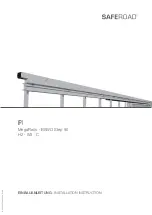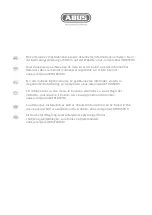
16
Connecting a Load to the 4314Ki
Connections are made to the front panel terminals using a 4-wire
configuration as described in
4-Wire Resistance Measurement
. When
using Valhalla test leads, the tabbed side of the banana jack is plugged
into the current terminals. This ensures that the current is carried in the
largest conductor and that the voltage input is shielded.
V
HI
☼
☼
I
HI
←Tab
V
LO
☼
☼
I
LO
←Tab
4-Wire Resistance Measurement
The four-terminal configuration of the 4314Ki eliminates errors normally caused by test lead and contact
resistances. In many applications, the contact resistance can exceed the value of the load by several orders
of magnitude. The 4314Ki bypasses this potential error source by providing two terminals of constant
current and an additional two terminals for high impedance voltage measurement. The result is a fast,
accurate resistance measurement of the load, independent of the resistance of the current carrying leads.
Figure 2 - Error Sources in Resistance Measurements
Figure 2 illustrates how the 4-wire principle is used to eliminate lead, wire, and contact resistances as
potential error sources. The internal current source inherently overcomes all series resistance (within
compliance voltage limits) and delivers a precise constant current.
The internal high-impedance DVM senses the voltage drop across the load. There is negligible contact and
lead resistance error created by the voltage measurement because the high input impedance of the DVM
limits current flow in the voltage leads.
















































